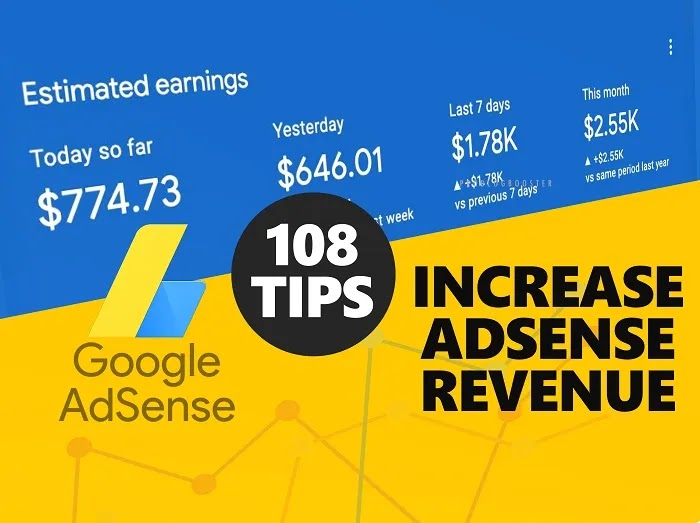The article discusses Jasper AI, transform the way you create content with Jasper AI! Discover the power of artificial intelligence in writing with its AI-powered content creation service. Create high-quality, original content for your blogs, business, or personal needs in a matter of seconds. With user-friendly interface and affordable pricing, Jasper AI is the perfect tool for enhancing your writing skills and improving productivity. Check out here for a comprehensive review and real-life examples of using Jasper AI.
Top 10 Factors Affecting Website Page Speed, Performance, And Optimization
Which factors affect the page speed of a website? —
Poor coding generates poor performance. Incorrectly structured code increases page load times and makes a bad user experience. To improve website speed & page loading speed I have already discussed how important website speed is for bloggers as well as webmasters to reduce website load time in my article on Top 10 Free Mobile Speed Test Tools | Loading Optimization | Website Testing Tools. Get your PageSpeed score high and use PageSpeed suggestions to make your website load faster using online tools.
However, to understand how to decrease website loading time, you must understand the different factors affecting the website load time and performance. So let's discuss factors that affect page speed & website optimization

10 Factors Affecting Website Load Time, Performance, And Optimization
Here you will get to know page speed insights answers of what causes slow website loading? What makes a website load faster? How does the website speed & loading time of a website increase? Below are the major factors that you require to work on to decrease website load time. You might feel somewhat technical, but at least you will get a basic idea about Which factors affect the page speed of a website so that you understand things properly further.Check out factors that affect page load time & website optimization:
1. Reduce server response time
Server response time is nothing but the time required for your host server to start loading the necessary HTML code and its structure. Google advises having your server response time under 200ms.To make sure your server response time is less, you need quality but developer-friendly web hosting. Powerful web hosting platforms effectively reduce server response time and so high website speed.
How to Reduce Server Response Time:
- Make sure you are using a high-performance hosting service.
- Invest in advanced & useful bot management solutions
- Reduce or stop bloating
- Optimize your database.
- Adopt inline prefetching.
- Optimize WebFont loading and rendering
- Fix 404 errors on your website
- Keep all things up to date
2. Reduce HTTP requests
Every web page is constructed using lots of pictures, CSS, JavaScript, etc. An HTTP request has to be generated for each of these elements. So more the number of elements, the more requests will be generated which will increase interaction to-and-fro from your server and hence increase your page load time.The number of HTTP requests generated depends largely on your website template and the widgets/plugins you added to your site. Poorly coded templates and plugins will increase the number of HTTP requests & hence affects website speed by slow down your website rendering.
How to Make Fewer HTTP Requests:
- Find out which widgets or plugins you added and remove those that are not used or required.
- Minify code (HTML, CSS, Javascript)
- Delete unused JavaScript and CSS files
- Serve lazy image loading
- Defer loading of JavaScript
- Always keeps all the plugins/widgets updated and working.
- Reduce image size
- Remove unwanted images from the page as each causes HTTP requests
3. Enable compression
If your website is 'image and graphics' rich, your total page size would be very high which may take a lot of time to load at the user end depending upon his connection speed.To avoid this, you can compress your web page using Gzip. Almost all modern-day web browsers support and negotiate Gzip and hence users can quickly download and view the web page compressed to GZIP format. Read to optimize your site; Optimize Website Template With gZip Compression | Web Tips
Most hosts provide you an option for GZIP compression. You can also use WordPress plugins to achieve the same.
4. Enable browser caching
Browser caching can help by storing your website files locally in the user's device. When you enable browser caching, a cache of your web page would be created on the user’s browser. Without browser caching enabled, a visitor's browser has to generate more number of HTTP requests for all the site elements like images, CSS, and JavaScript files.Now, you can leverage browser caching easily so that whenever the user visits the web page from the same device, instead of downloading all the elements from your server, most of them would be served from the browser cache, thus reducing the number of HTTP requests to your server and improving page load time.
You may also like to read, Top 20 Website Speed Optimization Techniques | Improve Page Loading Fast
5. Minify CSS and Javascript
Minification is the process of removing unwanted & redundant data from your HTML source code. This contains unnecessary spaces, line breaks, comments, repetitive codes, unused codes, etc. from HTML, CSS as well as Javascript.You can use plugins to minify your HTML, CSS, and Javascript.
Recently posted page that might help you know more, Top 10 Best WordPress SEO Plugins & Tools Helping You Get Higher Search Rankings [WP Optimization]
6. Reduce The Size of “Above The Fold” Content
Google encourages you to prioritize loading of “Above The Fold” content and also to keep its size lower, typically under 14.6Kb compressed. It reduces the amount of data used by your resources. Above-the-fold content can help you boost user experience & SEO.Optimize above-the-fold content for performance, this makes sure your main content is visible to your readers while your widgets and other scripts are executed.
If your website has employing above-the-fold content, you'll probably get higher conversion rates & lower bounce rates. And you would like to read more about 8 Reasons Why Visitors Bounce?
7. Optimize CSS delivery
As you know, CSS is used for styling & layout of your web pages. You can either use CSS as inline by including it along with HTML or you can use the same as an external code. CSS delivery optimization is nothing but decreasing the amount of time required for the user's browser to fetch & render your CSS files.Using your CSS inline can make your page load faster. However, you must make sure to include only a small piece of code as inline. Complex codes should be used as an external sheet as it may affect the rendering of “Above-The-Fold” content.
8. Use asynchronous scripts
Whenever a browser encounters synchronous Javascript, it stops all other page-loading functions while the Javascript is downloaded and executed causing slow website speed. If the Javascript is large, it may take considerable time to download. This significantly increases your website load time.Scripts tagged as asynchronous are downloaded in the background while other scripts are being executed. This makes sure that the browser has to wait for only the execution of the script which considerably reduces the website load time.
You may also like to read; [JavaScript] Lazy Load Facebook Like Box To Speed up Page Load Time | Website Performance Monitoring
9. Optimize images
Images can considerably raise your website load time. Unless you have a photography blog where you may need high-quality images.You must use images with lower resolution. You can also use plugins and external tools which help in the lossless compression of the image.
Recommended to check;
- Top 15 SEO Image Optimization Tips for Search Engine Traffic
- Top 18 Free Image Optimizer Tools/Sites To Compress Images Without Losing Quality
10. Avoid Landing Page Redirects
Redirection happens any time your visitor tries to load a page by a given URL but is instead transmitted to a site that uses a different address. Each redirection of the page generates an HTTP request causing your website loading time more.You must eliminate unnecessary redirects therefore you must minimize redirection to the landing page and as far as possible, avoid it.











